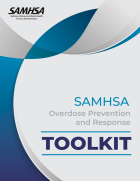Dashboard: Filter Bricks
Main page content



This issue brief provides information for State Mental Health Authorities (SMHA) about strategies for promoting person-centered planning (PCP) to enhance the quality of behavioral health services and the valued recovery outcomes of those that use them.

This report provides background history of the development of Peer Recovery (PR), including an overview of the current landscape of PR Programs. This report also provides a description of the variation in peer recovery rates, supervision, credentialing, and substance use disorder vs mental health.

Drug Abuse Warning Network (DAWN): ED Visits Involving Alcohol Short Report presents the following data from January 2021-September 2023 (1) national estimates and characteristics of alcohol-related ED visits (2) demographics of alcohol-related ED visits (3) percent of ED visits related to alcohol and at least one other substance.

This report looks at state and federal laws and policies that encourage braided funding to provide substance use disorder services, best practices for braiding funds, and pathways to sustainability for substance use disorder programs.

This report provides an update on the present state of coverage, availability of, and access to, medications for treating ongoing alcohol use disorder (AUD) and opioid use disorder (OUD) and reversing an opioid overdose within state Medicaid plans. It also includes examples of innovative efforts to increase access to medications for the treatment of SUDs.


This new consumer guide offers people with past or current problematic substance use a straightforward exploration of the roles, values, and work environments of professional peer specialists. This guide is a comprehensive resource that will help readers understand who professional peer specialists are, what they do in various work settings, and how to access and pay for their services. Through visual aids illustrating the integration of peer specialists into the treatment and recovery landscape and practical forms readers can fill out, this consumer guide will help facilitate a strong start toward collaboration with a peer specialist.

This report for policy makers and criminal justice and behavioral health professionals provides an overview of the status of the fields of competence to stand trial, incompetence to stand trial, and competence restoration for adults and youth in the criminal justice and juvenile justice systems.
Displaying 1 - 10 out of 157

